In an era where the world operates at the speed of information, internet cable wires emerge as the unsung heroes of our digital age. These unassuming strands of technology crisscross the globe, connecting us to the boundless realm of the internet. In this age of wireless wonders and virtual realities, it’s easy to overlook the foundational role played by these unpretentious cables. However, it’s these very cables that ensure the seamless transmission of data, the smooth streaming of content, and the unbroken lines of communication that define our modern lives.
Understanding Internet Cable Wires
What Are Internet Cable Wires?
Internet cable wires, often referred to simply as network cables or data cables, are specialized cables designed for the transmission of digital data between devices, typically within a local area network (LAN) or over longer distances in wide area networks (WANs). These cables serve as the physical infrastructure that underpins the digital world, allowing devices to communicate with each other, access online resources, and transfer data seamlessly.
At their core, internet cable wires are conductive pathways, typically made of copper or optical fibers, enclosed in protective sheaths. They facilitate the exchange of binary data signals, representing everything from text and images to videos and complex web applications, across computer networks.

It’s essential to distinguish internet cable wires from other cable types:
- Electrical Cables: Electrical cables carry electrical currents and are designed for delivering power to devices or transmitting analog signals. They are not suitable for data transmission and lack the necessary shielding to prevent electromagnetic interference.
- Audio Cables: Audio cables, like HDMI or RCA cables, are designed for transmitting audio signals between devices, such as from a DVD player to a TV or from a microphone to an amplifier. They are specialized for audio and video purposes, not data networking.
Types of Internet Cable Wires
- Ethernet Cables:
- Cat5e (Category 5e): Cat5e cables are a common choice for home networks and small businesses. They support data speeds up to 1 Gbps (Gigabit per second) and are suitable for most everyday applications.
- Cat6 (Category 6): Cat6 cables offer higher data transfer speeds, up to 10 Gbps, making them suitable for more demanding tasks and larger networks.
- Cat6a (Category 6a): Cat6a cables are an advanced version of Cat6, capable of supporting data rates of up to 10 Gbps over longer distances. They are often used in professional environments.
- Cat7 (Category 7): Cat7 cables provide even higher data speeds, up to 10 Gbps, with improved shielding for reduced interference. They are suitable for high-performance applications and data centers.
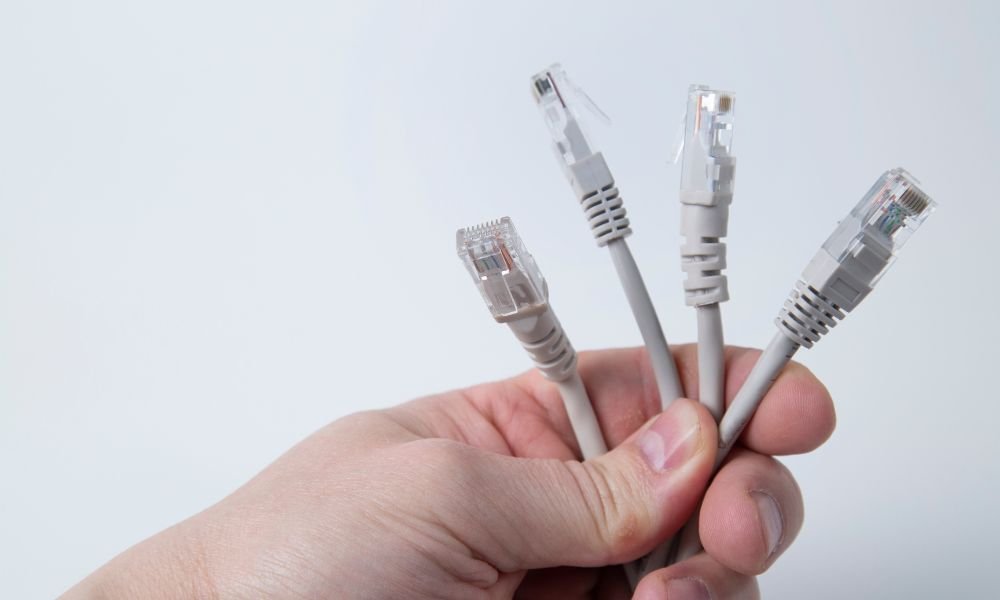
- Fiber Optic Cables:
- Single-Mode: Single-mode fiber optic cables are designed for long-distance data transmission. They use a single light source to transmit data and are ideal for connecting remote locations.
- Multi-Mode: Multi-mode fiber optic cables are suitable for shorter-distance applications within data centers and local networks. They use multiple light sources and are known for high bandwidth capabilities.
The specific use cases and advantages of each type:
- Ethernet Cables: Ethernet cables are versatile and widely used for connecting devices such as computers, routers, and switches within homes and offices. Their advantages include cost-effectiveness, ease of installation, and compatibility with most network equipment.
- Fiber Optic Cables: Fiber optic cables excel in scenarios requiring high-speed data transmission, immunity to electromagnetic interference, and long-distance connections. Single-mode fibers are ideal for interconnecting data centers or spanning vast distances, while multi-mode fibers are suitable for high-bandwidth, short-distance applications within buildings.
Advantages of Internet Cable Wires
Internet cable wires offer a stable and dependable connection. They are less susceptible to signal interference and environmental factors compared to wireless connections, ensuring consistent data transmission. Cable connections are known for their stability, providing a steady and predictable network performance. This stability is critical for applications that require low latency, such as online gaming or video conferencing. Many internet cable wires, especially Cat6 and Cat7 Ethernet cables and single-mode fiber optics, support high-speed data transfer rates, making them ideal for bandwidth-intensive tasks like streaming 4K video or large file downloads.
- In a crowded office environment with multiple devices, a wired Ethernet connection ensures that each device maintains a stable and high-speed connection, while wireless networks might experience congestion and slower speeds.
- Online gamers often prefer wired connections to minimize latency and ensure a lag-free gaming experience, as even milliseconds of delay can impact gameplay.
- Businesses relying on large-scale data transfers, video conferencing, or cloud-based applications benefit from the consistent and high-speed performance of cable connections.
Internet cable wires serve as the bedrock of modern connectivity, providing the reliability and performance required for our data-driven world. As we continue to explore the wonders of these unassuming cables, we’ll uncover more about their installation, maintenance, and the exciting future prospects they bring to our digital landscape.
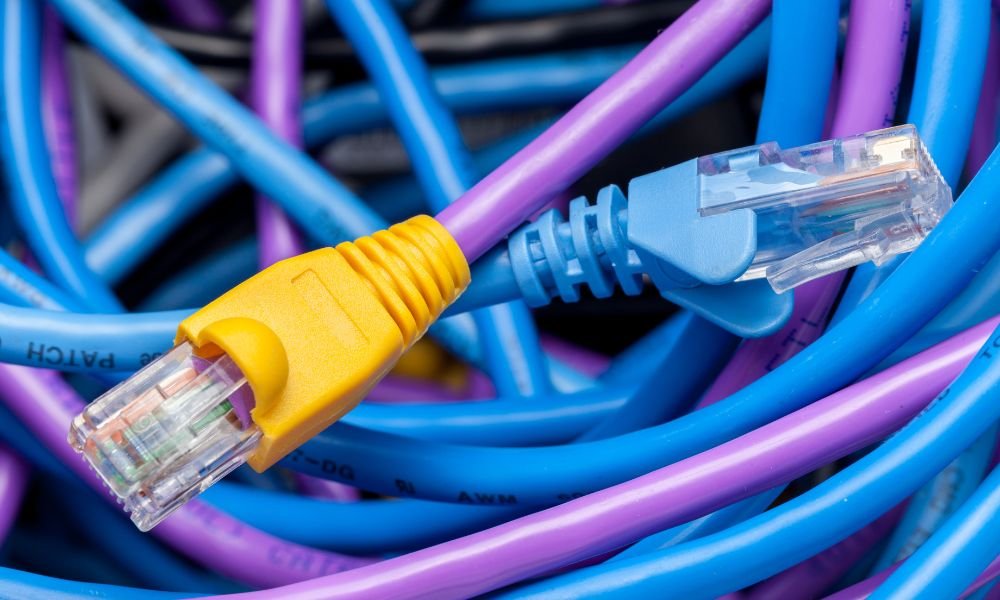
Internet Cable Wire Installation
Planning for Internet Cable Wire Installation
Planning is a critical phase in any successful internet cable wire installation project. It lays the foundation for a robust and efficient network infrastructure. Here’s why it matters:
- Optimizing Network Performance: Careful planning helps ensure that your network performs at its best. By assessing your current and future network requirements, you can select the right type of cables and infrastructure to meet your needs.
- Avoiding Costly Mistakes: Planning minimizes the chances of costly errors during installation. It helps identify potential challenges and allows you to address them proactively, saving time and resources.
- Future-Proofing Your Network: A well-thought-out plan considers future scalability and technology advancements. This means your network can adapt to changing demands without significant overhauls.
Guidance on assessing current network requirements, considering factors like location, devices, and bandwidth needs:
- Location: Determine where you need internet connectivity. Identify areas where devices will be located, and consider how cables will be routed to reach them. Understanding the physical layout is crucial.
- Device Types: Different devices have varying connectivity requirements. Assess the types of devices you’ll be connecting, such as computers, printers, servers, and IP cameras. Ensure that you have the appropriate ports and cables for each.
- Bandwidth Needs: Calculate your bandwidth requirements. Consider the data-intensive tasks your network will handle, like video streaming or large file transfers. This will help you choose the right cables to support your data needs.
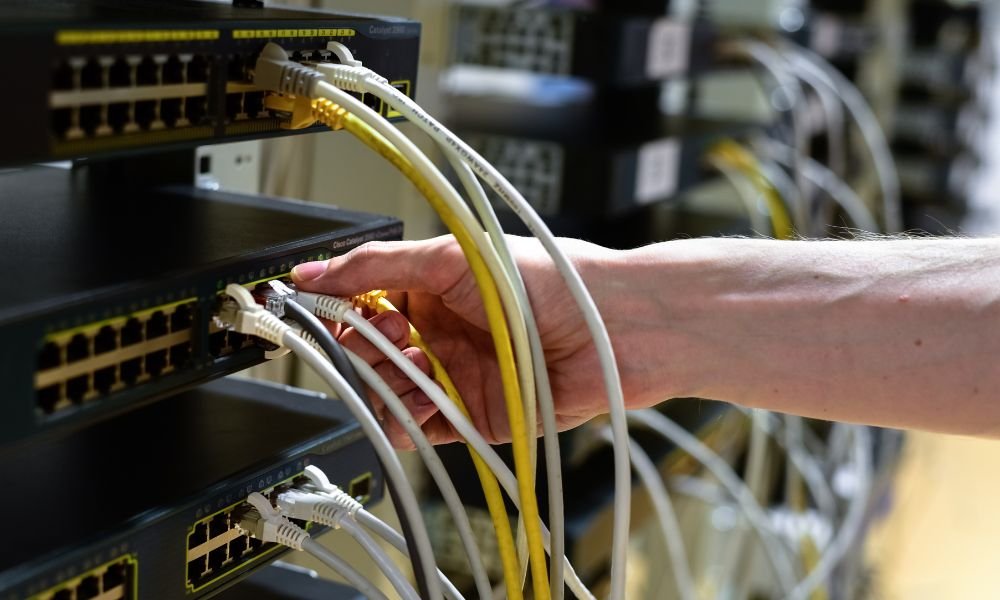
Internet Cable Wire Installation Process
- Cable Routing:
- Plan the route for your cables, avoiding interference with electrical wiring or other potential sources of interference.
- Use cable trays, conduits, or wall-mounted cable organizers to keep cables organized and protected.
- Cable Termination:
- Terminate the cables with appropriate connectors (e.g., RJ45 connectors for Ethernet cables).
- Follow industry standards and guidelines for termination to ensure reliable connections.
- Testing:
- After installation, thoroughly test the cables to ensure they are functioning correctly.
- Use cable testers to check for continuity, signal quality, and proper termination.
Tips for ensuring a neat and organized cable layout:
- Label cables at both ends to easily identify connections.
- Use cable ties or Velcro straps to bundle and secure cables together.
- Keep cable lengths appropriate to avoid excessive slack or tight bends, which can affect performance
Maintenance and Troubleshooting
- Regular Inspections:
- Periodically inspect cable connections for signs of wear or damage, such as fraying or exposed wires.
- Check connectors and terminations for tightness and proper seating.
- Preventative Maintenance:
- Clean dust and debris from cables and connectors to maintain optimal signal quality.
- Ensure cables are not subject to physical stress or bending that could lead to damage over time.
- Troubleshooting:
- When encountering connectivity issues, start with the basics, such as checking cable connections and ensuring they are securely plugged in.
- Use cable testers and diagnostic tools to identify and locate faults.
- Documentation:
- Maintain accurate documentation of your cable layout and connections. This makes troubleshooting and future upgrades more manageable.
Internet cable wire installation is a meticulous process that requires careful planning, precision, and attention to detail. By following best practices and conducting regular maintenance, you can ensure a reliable and high-performance network that meets your current and future needs. In the next section, we’ll delve into the benefits of using internet cable wires, showcasing their advantages over wireless connections in various scenarios.
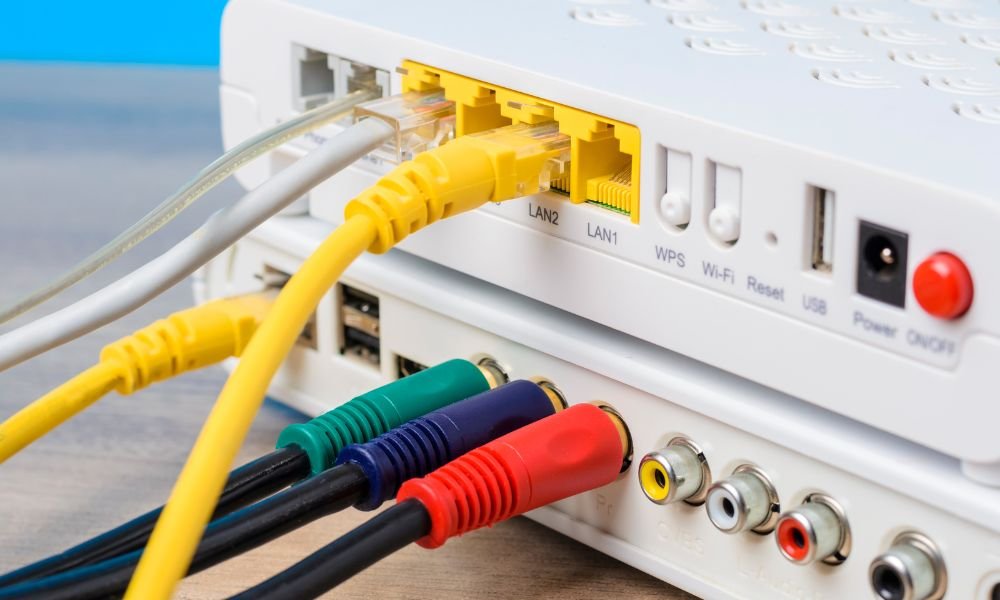
Benefits of High-Quality Internet Cable Wires
Reliability
High-quality internet cable wires are the cornerstone of a reliable network infrastructure. Their benefits include:
- Reduced Downtime: Unlike wireless connections, which can be susceptible to interference or signal disruptions, cable wires provide a stable and interference-resistant connection. This stability minimizes downtime and ensures uninterrupted access to online resources.
- Consistent Internet Access: Whether in a home office, business, or data center, high-quality cable connections offer dependable access to the internet and local network resources. Users can rely on a consistent and stable connection for their daily tasks.
Examples of businesses benefiting from reliable internet connections:
- E-Commerce Websites: Online retailers rely on uninterrupted internet connectivity to process orders, manage inventory, and maintain customer satisfaction. A reliable connection ensures that their websites are always accessible to customers.
- Financial Institutions: Banks and financial institutions depend on secure and reliable network connections for conducting transactions, managing customer accounts, and safeguarding sensitive financial data.
- Healthcare Facilities: Hospitals and clinics rely on stable internet connections for electronic health records (EHRs), telemedicine, and medical equipment. Downtime can affect patient care and safety.
- Manufacturing and Logistics: Manufacturing plants and logistics companies use network connectivity to manage production lines, monitor inventory, and track shipments. Reliable connections are crucial for efficient operations.
Speed and Performance
How premium internet cable wires enhance internet speed and overall network performance:
- High-Speed Data Transfer: Premium cable wires, such as Cat6 and Cat7 Ethernet cables, offer higher data transfer rates compared to wireless connections. This results in faster downloads, smoother video streaming, and quicker access to online resources.
- Low Latency: Cable connections typically have lower latency (delay) compared to wireless connections. This low latency is especially vital for applications that require real-time communication, such as online gaming and video conferencing.
High-quality cable connections ensure that streaming services deliver content without buffering or quality degradation. Users can enjoy 4K videos and high-definition streaming without interruptions. Gamers benefit from low-latency cable connections, which reduce input lag and provide a responsive gaming experience. This is crucial for competitive gaming and online multiplayer experiences. Businesses and individuals conducting large file transfers, such as backups or multimedia content uploads, appreciate the speed and reliability of cable connections. These transfers are completed quickly and efficiently.
Security
Cable wires are less susceptible to physical eavesdropping compared to wireless signals, which can be intercepted from a distance. This physical security makes it more challenging for unauthorized parties to access data transmitted over cables.
While cable wires themselves do not inherently provide encryption, they serve as a secure medium for transmitting encrypted data. Many businesses and organizations use encryption protocols to protect sensitive information as it travels over cable connections, adding an extra layer of security.
Wireless signals can extend beyond the boundaries of a building, making them potentially accessible to nearby devices. Cable connections are confined to the physical cable, reducing the risk of signal leakage and unauthorized access.
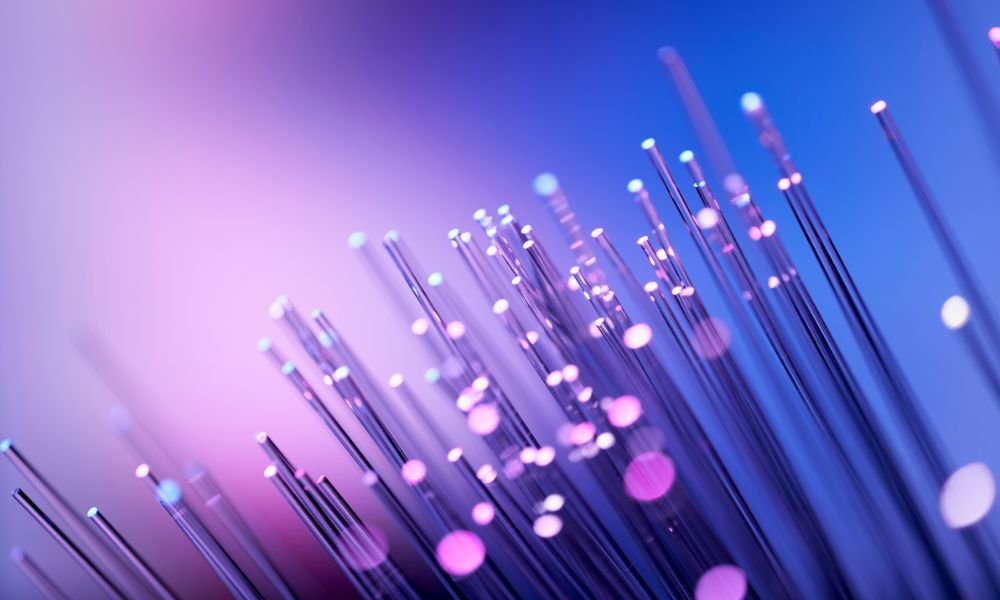
Choosing the Right Internet Cable Wires
Assessing Your Internet Needs
Before embarking on the selection of internet cable wires, it’s crucial to have a clear understanding of your internet needs. Here’s why it matters:
- Optimal Performance: Choosing the right cable wire type and length ensures your network operates at peak performance. Overestimating or underestimating your needs can lead to suboptimal performance.
- Cost Efficiency: Selecting cables that match your requirements helps you avoid overspending on unnecessary features or excessive cable lengths.
- Future-Proofing: Consider your future needs when assessing your internet requirements. This approach allows you to invest in cable wires that can accommodate growth and emerging technologies.
The guidance on selecting the right type and length based on your usage:
- Type of Cable:
- Ethernet Cables: Choose the appropriate category (e.g., Cat5e, Cat6, Cat7) based on your desired data speed and the devices you plan to connect. Higher categories support faster speeds and are suitable for bandwidth-intensive applications.
- Fiber Optic Cables: Select between single-mode and multi-mode fiber optics based on your network’s distance requirements. Single-mode is ideal for longer distances, while multi-mode is suitable for shorter, high-bandwidth connections.
- Cable Length:
- Measure the physical distance between your network devices and plan cable routes accordingly.
- Avoid using excessively long cables, as this can lead to signal degradation and increased costs.
Quality and Brand Considerations
- Cable Quality:
- Assess the build quality of the cables, including the materials used and the manufacturing process.
- Look for cables with strong connectors, durable sheaths, and proper shielding to minimize signal interference.
- Compliance with Standards:
- Ensure that the cable wires comply with industry standards and certifications. For Ethernet cables, check for TIA/EIA standards, while fiber optic cables should adhere to ITU-T and IEEE standards.
- Reputable Manufacturers:
- Research and choose cable wires from reputable manufacturers known for producing high-quality and reliable products.
- Read customer reviews and seek recommendations from trusted sources to identify trusted brands.
- Warranty and Support:
- Check if the cable wires come with warranties or guarantees from the manufacturer. This provides peace of mind in case of defects or issues.
- Verify the availability of customer support or technical assistance in case you encounter installation or performance problems.
- Cost vs. Quality:
- While cost is a factor, it’s essential to strike a balance between affordability and quality. Avoid extremely low-priced cables, as they may compromise on performance and durability.

